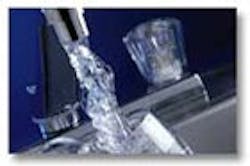EPA Requests Information About Chemicals Used in Natural Gas Extraction
The U.S. Environmental Protection Agency (EPA) announced that it has issued voluntary information requests to nine natural gas service companies regarding the process known as hydraulic fracturing. The data requested is integral to a broad scientific study now underway by EPA, which Congress in 2009 directed the agency to conduct to determine whether hydraulic fracturing has an impact on drinking water and the public health of Americans living in the vicinity of hydraulic fracturing wells.
In making the requests of the nine leading national and regional hydraulic fracturing service providers--BJ Services, Complete Production Services, Halliburton, Key Energy Services, Patterson-UTI, PRC Inc., Schlumberger, Superior Well Services, and Weatherford--EPA is seeking information on the chemical composition of fluids used in the hydraulic fracturing process, data on the impacts of the chemicals on human health and the environment, standard operating procedures at their hydraulic fracturing sites and the locations of sites where fracturing has been conducted. This information will be used as the basis for gathering further detailed information on a representative selection of sites.
“This scientifically rigorous study will help us understand the potential impacts of hydraulic fracturing on drinking water--a concern that has been raised by Congress and the American people,” said EPA Administrator Lisa P. Jackson. “By sharing information about the chemicals and methods they are using, these companies will help us make a thorough and efficient review of hydraulic fracturing and determine the best path forward. Natural gas is an important part of our nation’s energy future, and it’s critical that the extraction of this valuable natural resource does not come at the expense of safe water and healthy communities. EPA will do everything in its power, as it is obligated to do, to protect the health of the American people and will respond to demonstrated threats while the study is underway.”
Hydraulic fracturing is a process in which large volumes of water, sand and chemicals are injected at high pressures to extract oil and natural gas from underground rock formations. The process creates fractures in formations such as shale rock, allowing natural gas or oil to escape into the well and be recovered. During the past few years, the use of hydraulic fracturing has expanded across much of the country.
EPA announced in March that it will study the potential adverse impact that hydraulic fracturing may have on drinking water. To solicit input on the scope of the study, EPA is holding a series of public meetings in major oil and gas production regions to hear from citizens, independent experts and industry. The initial results of the study will be announced in late 2012. EPA will identify additional information for industry to provide--including information on fluid disposal practices and geological features--that will help EPA carry out the study.
EPA has requested the information be provided on a voluntary basis within 30 days, and has asked the companies to respond within seven days to inform the agency whether they will provide all of the information sought. The data being sought by the agency is similar to information that has already been provided separately to Congress by the industry. Therefore, EPA expects the companies to cooperate with these voluntary requests. If not, EPA is prepared to use its authorities to require the information needed to carry out its study.
EPA is currently working with state and local governments who play an important role in overseeing and regulating fracturing operations and are at the forefront of protecting local air and water quality from adverse impacts.
Source: U.S. EPA
